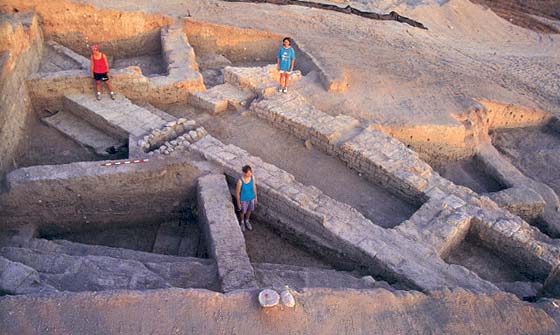Image Details

John Camp
Peace through strength? The trauma inflicted upon Tel Rehov in the ninth century B.C.E.—heavy fires likely the result of conquest—left a permanent scar on the settlement. After centuries of occupation, citizens abandoned the lower city, and Rehov shrunk to half its prior size. In the eighth century, those citizens still living in the upper city apparently determined that a city wall might provide some protection against marauders. Thus a double mudbrick wall (running diagonally from upper left to lower right) was constructed to protect the upper city. The outer wall was 4 feet thick; the inner, 2.5 feet. What appears to be a tower (not visible in the photograph), also made of mudbrick, rose above the double wall, while a stone drain (cutting across the center of the walls) channeled rainwater away from the city.
